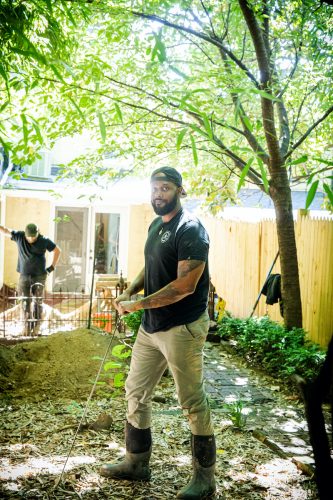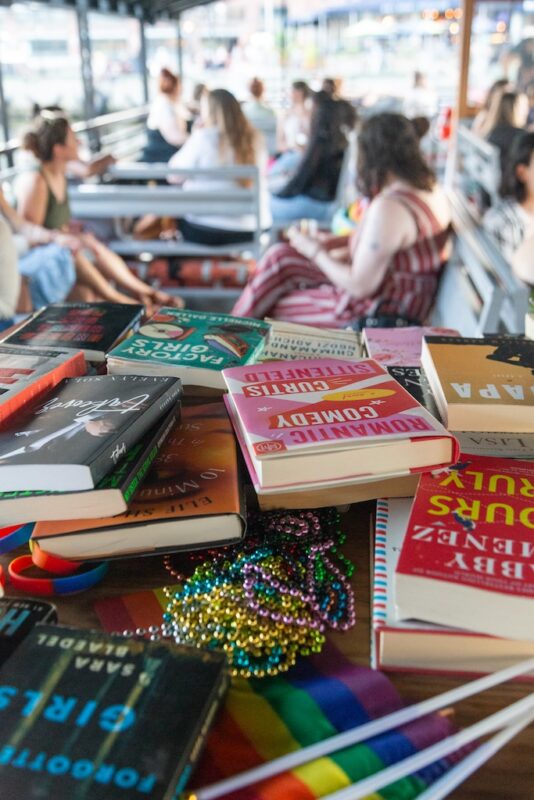Unlike last week, SO MUCH happened on the internet this week. Pakistan is flooding. The affidavit the justice department used to get a warrant to search Trump’s Mar-a-Lago residence was released. Lena Wilson beefed with Amandla Sternberg. The publishing industry doesn’t know what it’s doing. Cardi B beefed with a Barb.
Highlights: Loan forgiveness, History is a Weapon, Clippy, Ketanji Brown Jackson, Breonna Taylor, mapping unmappable gender, Cinderella, House of the Dragon, massacring wolves, and worlds are always ending.
1. Vox: Biden’s big new student loan forgiveness plan, explained
This week Joe Biden announced his student loan forgiveness plan. The plan relieves up to $10,000 for people who make $125,000 or less individually, or $250,000 or less as a couple or household. People who received a Pell Grant can qualify for an additional $10,000 for a total of $20,000. This Vox explainer covers the ins and outs of the program, and Biden’s reasoning for $10,000, along with criticisms of the program.
Expectedly, the plan was widely discussed on Twitter. Histories of why so many people have so much debt were explored (Reagan is involved). The White House pointed out the hypocrisy of the Republican party, people shared heartfelt stories, and there were lots of memes.
2. History is a Weapon
While following the Twitter debate on Biden’s student loan forgiveness plan, I came across this online project, and more specifically an essay by Dorothy Allison where she discusses class and higher education. After reading Allison’s essay, I quickly began to explore the rest of this anonymous project that defines history as “[not] what happened, but the stories of what happened and the lessons these stories include.” This site is filled with so many incredible resources.
3. Seattle Met: The Twisted Life of Clippy
Even though I rarely use MS Word, I really do miss Clippy. Debuting in Office 97, the cartoonish paperclip virtual assistant was “an incorporeal know-it-all [who] popped up to make us feel even worse about the novel notion of word processing in the mid-’90s.” As a kid messing around on Word, however, I remember Clippy being very helpful. But Clippy was short-lived. “Microsoft banished it. Time labeled it one of the 50 worst inventions ever. But nearly three decades after its genesis at the Redmond tech giant… improbably lives on.”
Throughout the years, I’ve seen Clippy memes and discourse online. In 2021, “Microsoft officially revived the Office Assistant… The character replaced a plain old paperclip in Microsoft 365 to help liven up the company’s emojis and indulge a social media outpouring.” Despite not being the most helpful assistant, Clippy lives on because “it reminds us of a time when assistants couldn’t target us with ads or mimic a dead loved one’s voice. When tech, even in the form of a clueless office supply, seemed a little more human.”
4. Vogue: The Grace and Promise of Justice Ketanji Brown Jackson
Oh boy! As soon as I saw that Annie Leibowitz took pictures of Ketanji Brown Jackson for Vogue I knew it was going to be a thing—and rightfully so!
Firstly, Imeime Umana’s writing is deeply heartening and explores how “Justice Jackson’s confirmation speaks to a deep-seated American desire to believe that we can transcend our past.” The reverence Umana, a Black woman and attorney, has for Jackson—whom she’s met on multiple occasions—is clear in this piece, which exudes care and hope.
The photographs by renowned portrait photographer Leibovitz, however, leave much to be desired. While Leibovitz is known for her photographs of famous and powerful people the world over, she is also known for not knowing how to photograph Black people, specifically darker-complected women. In addition to the common critique—that Leibovitz made the skin of a Black person look dull and ashy—the composition of the photos has also been scrutinized. In one image, Jackson is leaning against a column at the Lincoln Memorial in Washington, DC. She is tucked in the shadows and Lincoln is grandly lit behind her, becoming the focal point of the image.
Tayo Bero of The Guardian writes that in that photograph, “having Abraham Lincoln be the focal point of the first image came off to many critics as projecting a white savior narrative. Brown Jackson is portrayed stepping into her new role as part of a larger tradition in the US government, while the man who, ostensibly, made it possible for a Black woman to even hold that position hangs literally over her head.” As Tressie McMillan Cottom noted in an Instagram caption, “[Leibovitz] makes no exceptions for the visual and political erasure of Black women’s humanity. She pulls us into a hostile canon and makes the hostility beautiful. Beautiful ugliness is maybe the worst kind because it seduces us into that which oppresses us.”
Leibovitz, and Vogue, have been getting this critique for decades, and they really should just listen.
5. Mother Jones: Breonna Taylor Is Dead Because Cops Lied. One Finally Pleaded Guilty.
A police officer involved in the murder of Breonna Taylor has finally been convicted more than two years after Taylor was killed. Taylor, a 26-year-old EMT at the time, was murdered in her Louisville apartment when police executed a no-knock warrant. Kelly Goodlett, an ex-officer, “admitted on Tuesday in federal court that she helped a colleague lie to convince a judge to sign off on the no-knock warrant that allowed officers to enter the home in search of drugs. To get the warrant, detectives allegedly claimed to have evidence that they did not have.” Goodlett was not present at the time of the raid. No drugs were found at Taylor’s residence.
6. Pipe Wrench: Mapping No. 7
Any new issue of Pipe Wrench is such a privilege, joy, and treat to read. Issue No. 7, the nonbinary issue, explores gender across cultures, place, and time—drawing from history to imagine tomorrows. There are so many different, beautiful perspectives represented in this issue, and Bethany Kaylor created an interactive map of its content.
I have yet to read the whole issue—each piece needs time to breathe—but Breai Mason-Campbell and Alizeh Kohari have already given me so much to think about.
7. ABC: Cinderella: The Reunion, A Special Edition of 20/20
I wore out my Cinderella VHS! For the longest time, the 1997 Cinderella, featuring Whitney Houston and Brandy, was the only Cinderella I knew. I was nearly 2 years old when the TV movie premiered, and almost certainly only saw it a few years later, and I didn’t know how revolutionary the film was until I was in my teens and early adulthood.
“Celebrating the 25th anniversary of ‘Rodgers & Hammerstein’s Cinderella,’ featuring members of its all-star cast including Brandy, Whoopi Goldberg, Bernadette Peters, Jason Alexander and more,” this special edition of 20/20 gave me so much joy! I don’t generally like to include things on this list that require a subscription, but I had to make an exception for this!
8. Slate: The Game of Thrones Prequel Suggests HBO Didn’t Learn a Thing From How It Ended
House of the Dragon, the Game of Thrones prequel, premiered last Sunday and it was underwhelming. Set 172 years before Daenerys Targaryen’s birth, the show “isn’t especially sophisticated or intelligent,” and is very violent and misogynistic. Executive producer and writer Sara Hess claimed the violence depicted in the show “is inherent in a patriarchal system,” positioning it as a critique of said system. But, as Sam Adams writes for Slate, “there’s so much violence in the show that it ceases to convey much of anything beyond the idea that this is a brutal and ugly world.” HOTD seems to situate itself in a TV landscape that no longer exists, and, thus far, falls flat.
I know many people that were diehard GOT fans who are also underwhelmed with HOTD. I will probably watch a few more episodes, but it is not something that I will pause my Sunday night for.
9. The Intercept: Rocky Mountain Massacre
One of my friends is from Montana. She often talks about Montana’s politics—her disdain for Greg Gianforte, the state’s first Republican governor in more than a decade. She tells me about wealthy ranchers and their contempt for predators. About indigenous people that have always called the land home. She talks about how working-class people often vote against their best interests. About how tourists and people with multiple homes are making the state unaffordable for people who live there. She thinks about the escapist fantasies people have of Montana and the myth of the west.
The wolves of Montana’s Yellowstone National Park are legendary, part of one of the most successful animal reintroduction programs. The wolves were reintroduced to the Rockies in the 1990s through a federal program after the government originally sanctioned their extermination in the 1920s in favor of livestock. However, “in February 2020, the FWP commission lowered the wolf-hunting quotas in the two hunting districts north of the park from two each to one. The quotas had existed for nearly a decade.”
Last year was one of the most deadly seasons for the wolves. “Roughly a fifth of Yellowstone’s wolf population was gone, with one pack seemingly eliminated entirely.” When the bans were lifted, “the state legalized the use of bait to lure wolves off protected lands. Aerial hunting was authorized, as was hunting after dark with night vision and bright lights to disorient wolves. Snares, indiscriminate tools that routinely kill other wild animals and pets, were now permitted.” Since their reintroduction, the wolves of Yellowstone have become “the cipher for a broader set of anti-government, anti-regulation, anti-science, right-wing politics in the West,” and are now the target of vengeful retribution.
10. Kenyon Review: To Live in the Ending
Every day we are confronted with a different way the world is ending. Alyssa Harad recalls discussing the apocalypse with a friend in 2013, who eschewed the term as “self-serving, exploitative, clickbait rhetoric that both paralyzes people with fear and excuses them from action. Many, many people will die, he says bitterly, but the world will not end. It may be irreparably changed, but it will go on without us.” The language of the apocalypse, or perhaps an apocalypse, is ever-present but it’s “dangerous because it is the language of divine fatalism. There is a great deal of work to do, and as climate change continues there will be even more. We need to keep our heads clear, and we can’t do that if they are full of hell flames, angry gods and devouring serpents.”
Throughout this essay, Harad explores her observations on apocalypses through vignettes reaching back to childhood, wading through what it means to live in the end when “worlds end all the time.”






